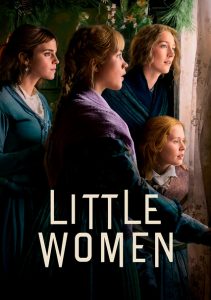May-2003
Director Lucky McKee
Starring Angela Bettis, Jeremy Sisto, Anna Faris
Scott’s Review #985
Reviewed January 30, 2020
Grade: B+
May (2003) is a macabre and twisted psychological horror film and the directorial film debut from Lucky McKee. Though not a box-office success, the film has become a cult favorite and is a feast for lovers of the deprived and tormented.
The wicked fun is to watch the main character, already troubled at the start of the film, dissolve into complete and utter madness.
The acting and the mood are exceptionally crafted.
Growing up with a lazy eye leaving her scarred with never-ending insecurity, May Canady (Angela Bettis) is a twenty-eight-year-old woman who has suffered from a troubled childhood.
Having always had trouble making friends, she is finally able to befriend a lesbian colleague, Polly (Anna Faris), and a handsome mechanic, Adam (Jeremy Sisto).
Before long, she spoils the friendship when her oddities brim to the surface. May descends into utter madness and decides to build a new friend using human body parts. Will bits and pieces of her friends be used in the creation?
Bettis is a goldmine in the central role and provides a healthy dose of sympathy and creepiness. Many film characters have been outright disturbing in cinematic history, but May is wounded and victimized so we, as viewers, want to see her win out for once.
All May wants is a friend and, especially with Adam, we root for her to find true love.
May is like a combination of Carrie and Frankenstein.
Adam, while handsome, is also weird, and a good mate for May. He introduces her to a bizarre movie in which two characters embark on a romantic picnic and then eat each other. Adam reveals that he created the film for a college project.
This impresses May- finally, she has a soulmate! She quickly ruins the moment by biting his lip, turning him off, and destroying her mounting confidence.
McKee is successful at making the film flow with precision and good pacing. Many rookie directors seem overwhelmed by a major motion picture undertaking, perhaps feeling more comfortable with short films. McKee proves he knows his stuff with an elegant and icy atmosphere that is just perfect for this type of film.
May is a quick one hour and thirty-three minutes, which is all that is needed to make its mark.
The final thirty minutes is the best part as the shit hits the fan in a big way. McKee’s choice to use the holiday of Halloween night as the backdrop is both obvious and ingenious.
May is not only ignored by Adam, but she learns he has a new girlfriend. To add insult to injury, Polly also finds love with their new girlfriend Ambrosia.
May feels isolated, finally snapping when she is ignored by her cat. She goes on a rampage and hacks up not only her friends but her eye.
May is a clever and atmospheric horror/thriller film with bursts of creativity and good-flowing storytelling. McKee may not always use originality and borrows heavily from other genre films, but he creates a nice blueprint of what his talents may lead to.
The film leaves the viewer unnerved and aghast, but isn’t that the point of a good horror film?
May (2003) could disappear over time but provides a worthy dedication to the horror genre.








